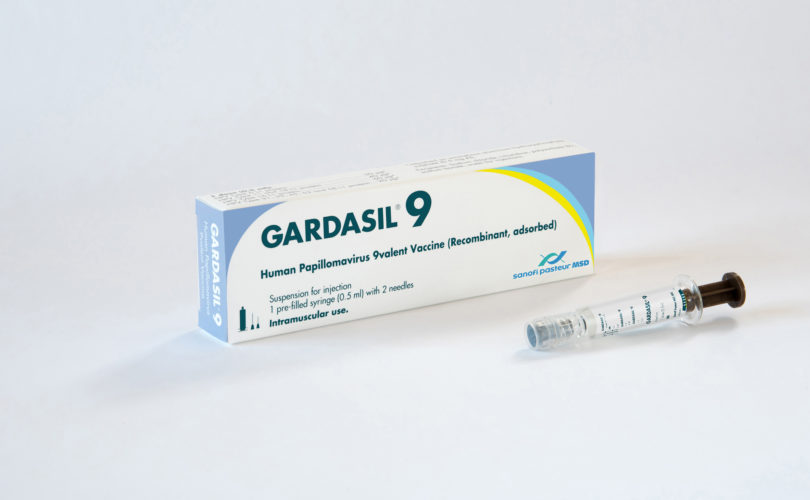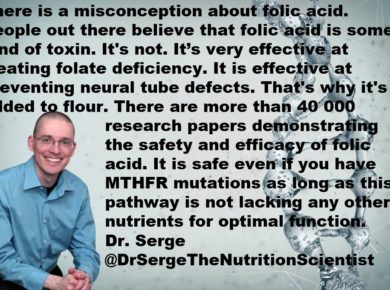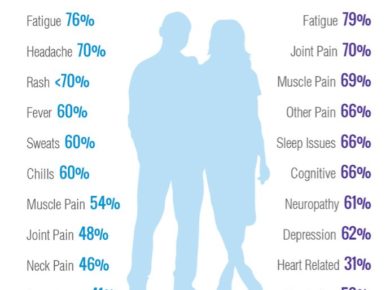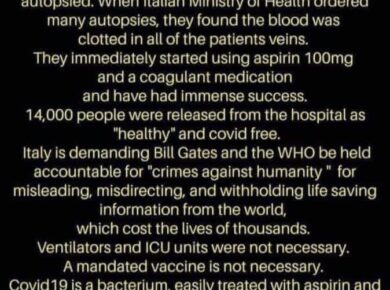Gardasil is most likely the worst vaccine ever.
I am sorry, I should have said it is the worse vaccine ever!
It has never been tested properly and some countries like Japan removed it from their vaccination schedule.
On top of that, the HPV virus has never been shown to cause cervical cancer. Actually, the evidence we have so far supports that this virus is not implicated at all. I will come back to this point in a few minutes
But first, the most commonly reported side effects with Gardasil are pain, swelling, and redness at the injection site, nausea, headache, fever, fatigue, and muscle or joint pain.
The CDC is working with researchers to follow up on two neurological deaths after HPV vaccination, and the CDC and FDA are both undertaking studies on the link between the HPV vaccine and fainting and blood clots
Dr. Bernard Dalbergue stated:
“Gardasil will become the greatest medical scandal of all
times because at some point in time, the evidence will add up to prove
that this vaccine, technical and scientific feat that it may be, has absolutely
no effect on cervical cancer and that all the very many adverse effects which
destroy lives and even kill, serve no other purpose than to generate profit for
the manufacturers.”
The Vaccine Adverse Events Reporting System shows the following adverse
reactions to Gardasil (as of April 2019):
Deaths 419
Disabled 2,634
Did Not Recover 11,507
Abnormal Pap Smear 648
Cervical Dysplasia 304
Cervical Cancer 135
Life-Threatening 1,703
Admitted to Emergency Room 15,278
Hospitalized 5,710
Extended Hospital Stay 429
Serious Adverse Events 8,343
Total Adverse Events 57,287
The VAERS is a voluntary reporting system with about 1% of issues being reported. In other words, these numbers could be much worse!
We can see that death is one of the side effects
You may have seen this news:
“Family Found to Have Met Burden of Proof that Gardasil Caused Daughter’s Death”
“When their 21-year-old daughter died unexpectedly in 2008, shortly after receiving the Gardasil human papillomavirus (HPV) vaccine, the Tarsell family blamed the vaccine for the tragedy and sought to hold the vaccine maker, Merck, accountable. They investigated the case and learned that their daughter had died from an arrhythmia induced by an autoimmune response to the HPV vaccine.”
The law protects vaccine manufacturers from being held liable for injuries caused by those vaccines, so the family filed a claim against the Secretary of Health and Human Services. After many years in court, the government conceded that the family had met the burden of proof that Gardasil caused the death.
The young woman died after receiving the third Gardasil vaccine in a series. She had received two other doses in 2007. After her second dose, she showed signs of an irregular pulse (arrhythmia). An electrocardiogram (ECG) confirmed the problem a month later. After the third dose, she reported feeling faint and dizzy, but did not go to the doctor before her death on June 23, 2008.
So do not tell me that this vaccine is safe! This is so absurd to believe it is the case!
In 2010, the parents filed a claim with the National Vaccine Injury Compensation Program (NVICP).
In June 2017, Judge Mary Ellen Coster Williams vacated and remanded the decision, sending it back to the Special Master to reconsider. After doing so, in September 2017, the Special Master awarded compensation to the family for the death of their daughter.
Gardasil received FDA approval in 2006 for the prevention of certain cancers and diseases caused by four HPV types. In 2014, the FDA approved Gardasil 9, an updated version of the vaccine, which covers the same four HPV types as Gardasil, as well as five additional HPV types. The original Gardasil is no longer distributed in the U.S.
It is so sad to see that the government and big pharma won’t do anything. They do not care if teenagers and young women die. The only thing that matter is their bank accounts.
This the vaccine has never been shown to work, to prevent cervical cancer. As a matter of fact, the number of cases of cervical cancer has been increasing since 2006.
But the most interesting part of this whole story is that a paper recently published has shown the HPV virus does not cause cervical cancer, so the vaccine is completely useless, a vaccine against human papillomavirus (HPV) is extremely unlikely to protect against cervical cancer.
The title of a paper recently published by McCormack et al in Molecular Cytogenetics:
“Individual karyotypes at the origins of cervical carcinomas”
According to this paper, neither genetic predisposition nor HPV infections are necessary for the development of cervical cancer. All cervical cancer cells investigated during the course of this study contained new abnormal karyotypes.
A karyotype is:
“The number and appearance of chromosomes in the nucleus of a eukaryotic cell. The term is also used for the complete set of chromosomes in a species or in an individual organism and for a test that detects this complement or measures the number.”
The clonality (genetic makeup) of these new abnormal karyotypes indicates the cervical cancers originated with these karyotypes, NOT from a virus.
Yep, the virus had nothing to do with the development of this cancer!
In order to grasp the potential significance of these statements, one must have a basic understanding of karyotypes. Most living things have chromosomes, or units of genetic information, in their cells.
The number and appearance of chromosomes vary from one species to another. A karyotype is the number, size, and shape of chromosomes in any given organism.
Every human has 23 pairs of chromosomes (46 total). Any different number would indicate a different species. For example, apes have 48 chromosomes and kangaroos 20. The number, size, and shape of the chromosomes in any given cell reveals the species of origin for that cell.
All cancers have individual clonal (cells descended from and genetically identical to the parent cell) karyotypes (number, size, and shape of chromosomes) and thus phenotypes (expressed physical traits). No two cancers are the same.
In this respect, cancer cells resemble a new cellular species existing within the human body, much like a parasite.
The genes and proteins within cancer cells are expressed at very abnormal concentrations when compared to the normal cells surrounding them.
However, since all genes and proteins expressed within cancer cells originated from human cells, cancers are not immunogenic (able to produce an immune response) – despite their huge biological differences from surrounding normal cells. This is the reason the immune system cannot “see” cancers.
Since the new carcinoma karyotypes express thousands of normal genes abnormally they generate numerous new cancer-specific phenotypes that correlate one-to-one with the new karyotypes of cancer cells. Cervical cancer cells are one example.
Cancers typically have 60-70 chromosome variations
The current hypothesis states that HPV encodes proteins which cause cancers as the virus replicates. Having common transforming proteins, all cervical carcinomas would be more or less the same if this was true. Since viral proteins are foreign to humans, viruses, virus-infected cells and possibly virus-transformed tumor cells would inevitably be immunogenic and as such eliminated by the host’s immune system within weeks to months after infection.
This is the reason why HPV-induced warts are eliminated by the immune system within weeks to months after infection.
This hypothesis raises four questions:
Why would only 1 in 10,000 HPV-infected women develop cervical cancer?
Why would cervical cancers only develop 20 to 50 years after infection? – In other words, why would the virus not cause cancers when it is biochemically active and causing warts, namely before it is neutralized by natural anti-viral immunity?
Why are cervical carcinomas individually very distinct from each other in terms of malignancy, drug-resistance, cell histology, as originally described by Papanicolaou et al. in Science in 1952, although they are presumably caused by the same viral proteins?
Why are cervical carcinomas that are presumably generated by Human Papillomavirus proteins not immunogenic and thus not eliminated by natural antibodies?
In spite of over 25 years of research on the HPV causes cancer hypothesis, there are no direct answers to these questions.
The main reason for this is that the hypothesis is just wrong!
We know that pathogens do not cause cancer. Everything has to do with the “terrain.” Even Pasteur admitted that he was wrong. We need to focus on the terrain, not the virus or bacteria.
By terrain, we mean the immune system, the organs, the tissues, the body.
In support of this, about 30% of cervical cancers are virus-free. In these cases, the virus couldn’t even theoretically be responsible for cancer.
This research paper advances the theory that carcinogenesis is a form of speciation (you can read more on this topic by looking up this paper by Duesberg et al., “Is carcinogenesis a form of speciation?” Cell Cycle 2011).
According to this theory, karyotypic evolutions generate new cancer species from normal cells after exposure to carcinogens (e.g. cigarette smoke, X-rays, mercury, toxins, etc.) or after spontaneous mitotic accidents (mutations that are generated when the cells divide).
In agreement with this theory, the authors discovered new, cancer-specific karyotypes and phenotypes in all cervical carcinomas tested so far, both in HPV-DNA-positive and negative carcinomas.
Furthermore, they discovered the individual karyotypes of each carcinoma correspond 1 to 1 to their individual phenotypes (e.g. invasiveness and resistance to chemotherapeutic drugs).
This is proof-of-principle that these karyotypes determine the phenotypes of cancers, rather than the defective and latent Papilloma-virus DNAs.
According to the karyotypic speciation theory, the defective viral DNAs of “HPV DNA-positive” carcinomas are functionally irrelevant, because they are not expressing any viral proteins.
Instead, they are non-immunogenic fossils of long past Papilloma-virus infections. As such they are no matches for the thousands of cellular genes that are abnormally expressed in cervical carcinomas.
Karyotypic speciation theory explains paradoxes presented by the HPV causes cancer hypothesis
Why would only 1 in 10,000 HPV-infected women develop cervical cancer?
According to the karyotypic carcinoma theory, this discrepancy is the result of the facts that HPV infection and carcinogenesis are two entirely independent events:
No specific correlation exists between HPV and cervical carcinoma.
HPV is very common, about 70 to 80% endemic in the American population.
The rest of the population is HPV-free. The virus is typically sexually transmitted at young age. Since cervical carcinomas occur in both HPV-positive and HPV-negative females, there is no specific correlative evidence that HPV plays any role in causing cervical cancer!
Yep, the virus does not cause cervical cancer!
There is also no specific functional correlation between HPV-infection and carcinogenesis. As shown from the clonal karyotypes of cervical cancers, cancers originate from a major rearrangement of the karyotypes of normal cells.
Since this is true for cervical carcinomas of HPV-positive and of HPV-negative females and is indeed true for all cancers, there is no functional evidence that HPV plays a role in the development of carcinomas.
This conclusion is consistent with the fact that carcinomas with new clonal karyotypes arise only 20 to 50 years after infection by HPV.
Thus there is neither a specific correlation between the presence and/or the functions; or lack of functions of HPV and carcinogenesis.
Why would cervical cancers only develop 20 to 50 years after HPV infection?
The karyotypic cancer theory sheds light on the presumed long latent periods from HPV infection to cancer. This huge latent period suggests evidence of two entirely unrelated events:
Infection with a sexually transmitted, benign Human Papillomavirus at a young age, and
A cervical cancer diagnosis, 90% of which occur over the age of 50
The presumed long latent period could be a result of the low probability of forming a new autonomous cancer species from a normal somatic cell by random karyotypic rearrangements.
The evolution of a new individual species of cells (cervical cancer cells) with the ability to reproduce independently of influence from surrounding human cells by random karyotypic variations of precursor cells takes time.
The very low probability of evolving a new autonomous cancer species by random karyotypic evolution explains not only the long and unpredictable time intervals between HPV infection (if it occurs) and cervical carcinomas but also the classical age bias of all cancers.
The age bias of cancer says that over 90% of all cancers only occur at ages over 50 years.
The authors concluded the chronological discrepancies between HPV infection and carcinogenesis exclude a direct mechanism of action connecting viral infection and the development of cancer.
Instead, the time-dependent evolution of a new cancer-specific karyotype supports the karyotypic theory of the origin of cervical carcinomas.
Why do cervical carcinomas have individual karyotypes and phenotypes rather than common phenotypes as predicted by the virus hypothesis?
The probability of forming the karyotype of a new autonomous cancer-species by random karyotype variations is very low and thus unlikely to ever generate the same new species twice, much again as in conventional speciation. Thus all cancers caused by karyotypic speciation will have individual and sometimes similar phenotypes.
Why are presumably viral cervical carcinomas not immunogenic and thus not eliminated by natural antibodies?
The karyotypic speciation theory explains why presumably viral cervical carcinomas are not immunogenic and are thus able to grow in HPV-DNA-positive people, which contain anti-HPV antibodies produced as a result of prior infection(s) by the virus.
According to the karyotypic cancer theory, carcinomas are generated de novo from cellular chromosomes, genes, and proteins, which are not immunogenic in the host of origin (just like all other cancers).
By contrast, hypothetical cancer cells generated by viral proteins would be immediately eliminated by antiviral immunity.
Since cervical carcinomas have clonal carcinoma-specific karyotypes, we know they were generated via chromosomal rearrangements of thousands of normal cellular genes, which are not immunogenic.
According to the authors, fragments of inert HPV DNA found in 70 to 80% of cervical cancers (and in 70 to 80% of all women in the US!) are left-overs of by-gone infections or warts that occurred 20-50 years prior to carcinogenesis. Infections and resultant symptoms were eliminated by natural anti-HPV antibodies.
Should the Karyotypic Speciation Theory be proven correct, HPV vaccines could not possibly reduce the incidence of cervical cancer or any other type of cancer for that matter.
This is a scientific debate which cannot be ignored. Public health authorities and medical professionals must apply the precautionary principle by suspending the use of HPV vaccines and supporting the already proven, safe and effective method of controlling cervical cancer, Pap screening.
This proven test for cervical carcinomas, termed Pap screen after Papanicolaou, costs only a small fraction of the $300-500 for the Gardasil and Cervarix vaccines and has NO serious adverse effects.
If HPV vaccines are useless, it is certainly not worth submitting yourself (or your loved ones) to the 2.3 to 2.5% risk of serious adverse reactions AND the 2.4 to 3.3% risk of developing a new medical condition potentially indicative of autoimmune disorders experienced by Merck’s Gardasil 9 clinical trial participants.
In conclusion, the latest science seems to demonstrate that the HPV virus is not implicated in the development of cervical cancer and therefore the HPV vaccine is completely useless.
God bless y’all 😊
Dr. Serge






